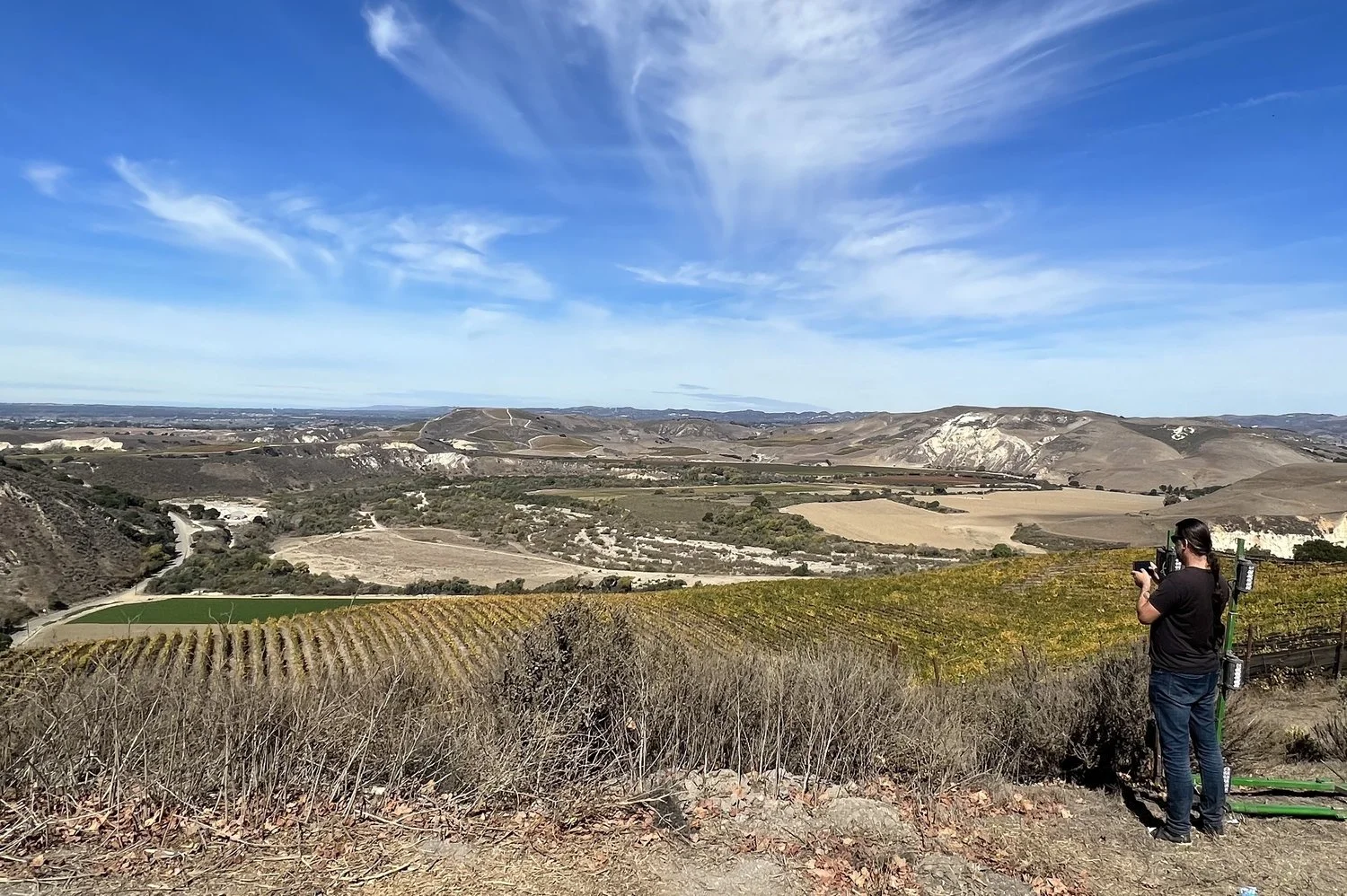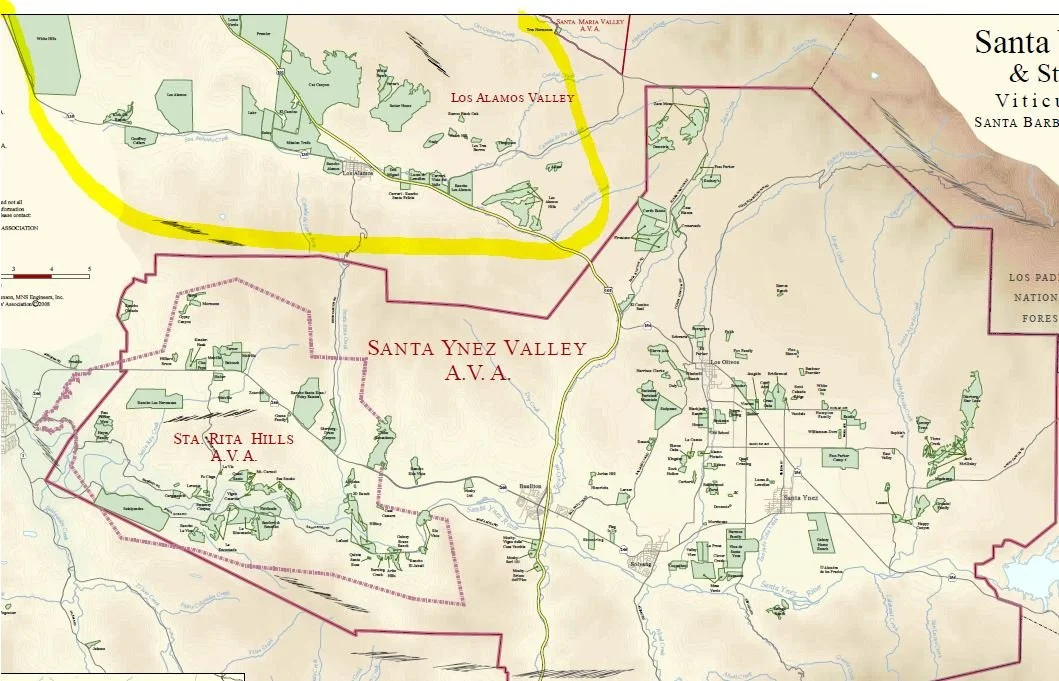One day after my lunch date with Tyler winemaker Justin Willett, I was visited by the team from Sandhi and Domaine de la Côte to taste and discuss the new vintages from Raj Parr and crew. All it took was one sip from the 2020 Sandhi Santa Rita Hills Chardonnay to send my taste buds into a frenzy and my brain into overload. The combination of ripeness with acidity, salinity, and minerality in these Santa Rita Hills wines is not just incredibly exciting, it has transformed my mindset into a hoarder-like purchasing mode, hellbent on squirreling away as much of this stuff as I can afford. Cases of Radian Vineyard Pinot Noir, scattered bottles of Bentrock Vineyard Chardonnay, and back vintages from Sanford & Benedict Vineyard, across a multitude of different producers.
I’ve been through enough wine and spirits gentrification in my career to know what the future holds for the Santa Rita Hills appellation and the Burgundian-like wines currently being produced there (for a fraction of Burgundian prices). I watched Bordeaux prices skyrocket after the 2005 vintage, ending my chances of ever affording the wines I’m most passionate about. I sat by as single malt prices quintupled over the last decade, forever changing the landscape of luxury. And Burgundy? Burgundy has become so ridiculously rare and expensive, you have to pay $100+ a bottle just to drink a village level wine from a serious producer, let alone a premier or grand cru expression. Meanwhile, prices for the very best wines from the Santa Rita Hills remain well under $100 and well within reach. But for how long? That’s the million dollar question.
Terroir, like many buzzwords, has become a bit hackneyed over the years, as just about every producer from wine to spirits to beer has stressed the individuality and quality of its local ingredients, even if those ingredients aren’t all that special. Yet, it’s still the reason why wine drinkers will and should pay an extraordinary amount for a bottle of wine. There are a million creamy and buttery Chardonnays out there, but only Chablis can taste like Chablis because of its incredibly chalky soils. Only Pulingny-Montrachet can produce wines with weight and a characteristic flintiness that thrills the palate with every sip. There’s a reason why the names of these regions and vineyards have become known to wine drinkers around the globe. They are special. There’s something magical in their geographic and geological conditions that produces complex and fascinating wines.
As I’ve been finding out firsthand over the last two years, the Santa Rita Hills vineyards are just as special in their own way. You can bet that once the rest of the world finds out just how special these wines are, availability is going to go down, prices are going to spike, and we’re going to have to fight for our annual allocations just like with every other hot genre in our industry. While collectors in Europe, Asia, the U.S. and elsewhere continue to fight over $600 bottles of Armand Rousseau Gevry-Chambertin or $1600 of Clos de la Roche, we can easily drink $35 bottles of 2020 Sandhi Santa Rita Hills Pinot Noir and $70 bottles of Liquid Farm Radian Vineyard. Justin Willett’s 2020 Tyler La Encantada Vineyard is $64.99 and drinks far above any village Burgundy I’ve tasted in the last few months. These wines are right here; available. The vineyards are in our backyard, just an hour-plus away from Los Angeles.
As an AVA, the Santa Rita Hills appellation just turned fifty his year, marking the anniversary of industry pioneer Richard Sanford’s first wines from Sanford & Benedict Vineyard in 1972. As the buzz from those wines began to spread, they kept planting Pinot Noir and Chardonnay in the most rugged of locations, allowing the vines to struggle deep into the earth and soak up whatever these sites had to express. Twenty-five years later, La Rinconada Vineyard was planted just adjacent to Sanford & Benedict, and is now a name in its own right. In 2000, Richard Sanford planted La Encantada Vineyard, the first certified organic plot in the Santa Rita Hills (we have a few bottles left of the 2015 Sanford in stock now if you want to grab one). In 2007, more vines were added into the 200 acres of planted vineyard space at Rancho Salsipuedes, where Bentrock and Radian Vineyards lie. Acquired by the Hilt in 2014, we’re only now realizing just how incredible these wines can be.
Unlike Burgundy, which despite its recent surge in popularity has centuries worth of documentation for its best vineyards, we’re still discovering the great potential of the Santa Rita Hills region. New sites are still being planted. Recent additions like Tyler’s Mae Estate and the vineyards at Domaine de la Côte still have their best wines ahead of them. The time to jump into the Santa Rita Hills pool is right now. Today. Immediately! By the time you figure out what you like and what’s worth buying, you’ll likely still be able to find and afford the bottles you want. Five or ten years from now? I don’t know if that will be the case. Like I said, I’ve been through all this before. Ten years ago you could get Blanton’s whenever you wanted it, and no one really cared about E.H. Taylor. In today’s modern era, pricing and availability can change in an instant.
-David Driscoll


